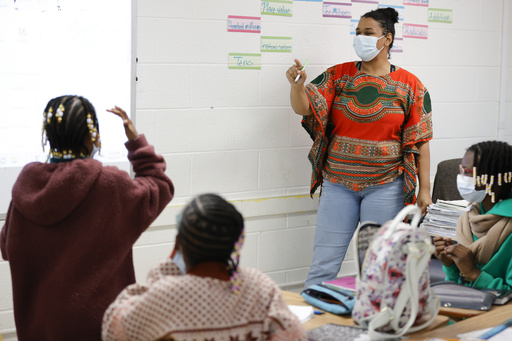
ATLANTA — Following two months of revisions, Georgia has announced its updated list of underperforming schools, allowing over 400,000 students the opportunity to apply for $6,500 vouchers intended to cover private school tuition or home-schooling costs. The Governor’s Office of Student Achievement unveiled this latest list on Friday, having previously released and then withdrawn two earlier versions in December. The recent adjustments resulted in only a few minor changes to the list.
Students residing in areas designated as the lowest-performing 25% of schools by Georgia’s academic rating system are eligible to apply for what are known as “promise scholarships.” The Georgia Education Savings Authority, established by this initiative, interprets eligibility to include any students living within the attendance zone of these schools, regardless of their actual enrollment. Thus, if a middle school is listed among the lowest performers, students in the local elementary or high schools are also allowed to apply.
An analysis reveals that every student in 65 out of Georgia’s 180 traditional school districts qualifies for these vouchers, with significant eligibility in districts such as Augusta’s Richmond County and Macon’s Bibb County. Most districts with universal eligibility tend to be smaller and rural in nature. Additionally, a large proportion of students in DeKalb County, Clayton County, and Atlanta will also have the chance to apply, according to the report.
House Education Committee Chair Chris Erwin, a Republican from Homer, expressed concern that the interpretation allowing all students within a zone to apply strays from the original intent of lawmakers. He is contemplating introducing legislation within the current session to restrict eligibility solely to students who attend the designated low-performing schools, rather than those attending other institutions within the same attendance zone. However, it’s uncertain if the pro-voucher Senate would endorse this proposal.
The release of the list comes just ahead of the first application window, which starts on March 1 and extends through April 15. The Georgia Education Savings Authority has planned additional application periods in June and September. Yet, it is noteworthy that many private schools have already closed their application deadlines for the 2025-2026 academic year. Students may still be accepted if they applied before knowing their eligibility status or if schools permit late applications.
Under the law, funding for these vouchers is capped at 1% of the public school funding formula, which equates to approximately $141 million. This amount could potentially enable more than 22,000 vouchers to be issued. Although Governor Brian Kemp has recommended allocating this full amount, state legislators have yet to reach a decision on the funding level. The law also stipulates that Georgia must fully finance its public schools before any voucher funds are disbursed separately.
With 1.75 million public school students across Georgia, the broad eligibility for these vouchers raises the potential for applications to outstrip the allocated funds, heightening pressure for increased spending limits. Already, Republican Lt. Governor Burt Jones has backed a proposal to extend eligibility to all foster children.
Nationwide, voucher programs are expanding, with proponents advocating for universal access regardless of educational performance or family income. In states such as Arizona, Florida, Iowa, and Ohio, which have implemented such universal voucher systems, there has been a significant surge in applications, leading to budgetary challenges.
In Georgia, the law’s scope is more restricted, allowing only those children zoned for underperforming schools who are either new kindergartners or enrolled for two semesters to apply. In instances where applications surpass available vouchers, priority will be given to families earning less than four times the federal poverty level, estimated at around $100,000 for a family of three. Should applications still exceed available funds, a random drawing will determine recipients.
The funds can be utilized for a variety of educational expenses, including private school tuition, textbooks, transportation, home-schooling materials, therapeutic services, tutoring, or college-level courses for high school students. This program passed the House with a narrow margin of support in the spring, following considerable influence from Governor Brian Kemp, House Speaker Jon Burns, and other Republican leaders.
Revisions to the list were necessitated on two occasions after authorities found that they had initially excluded specific types of schools, such as charter and alternative institutions.

